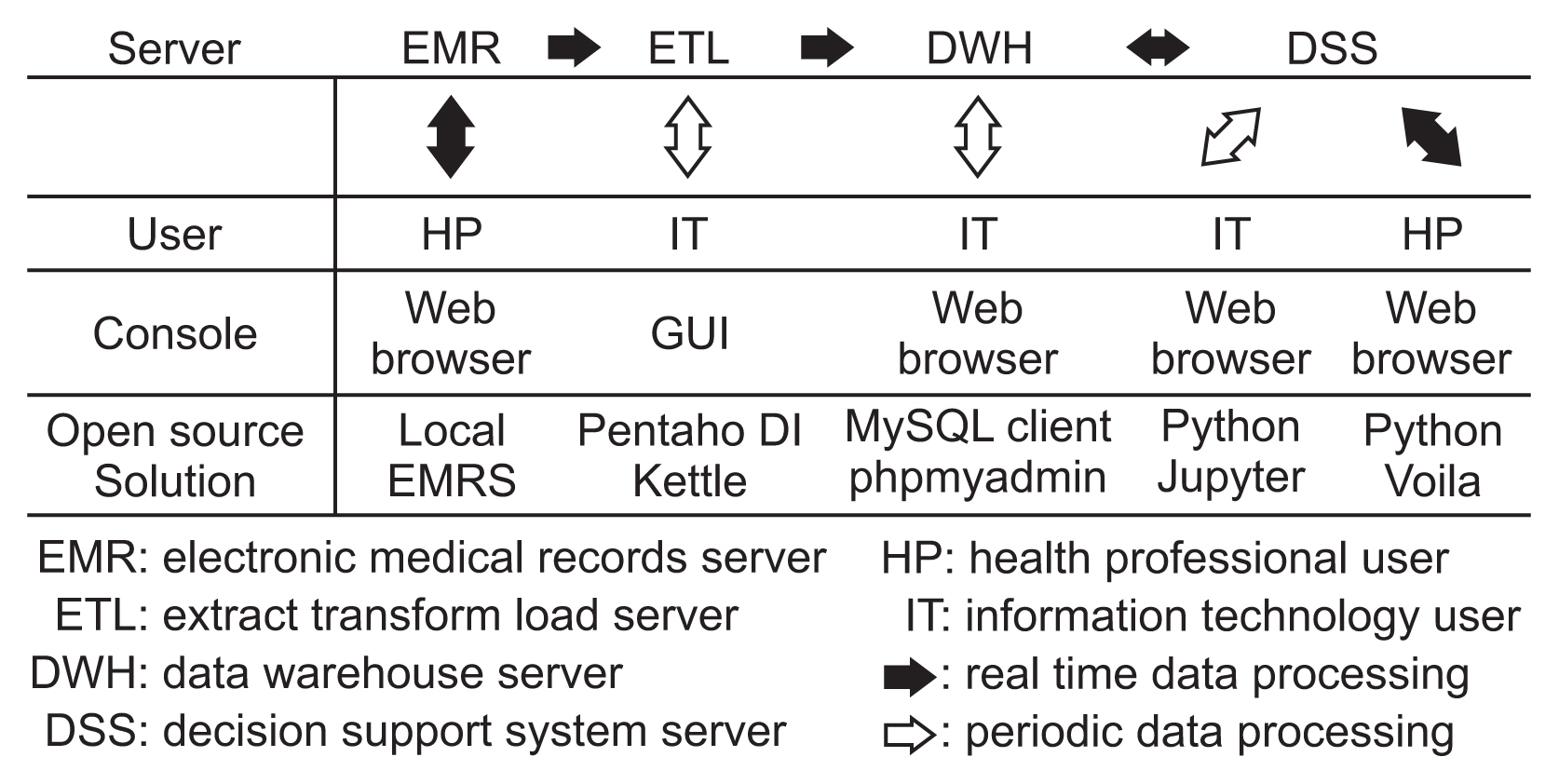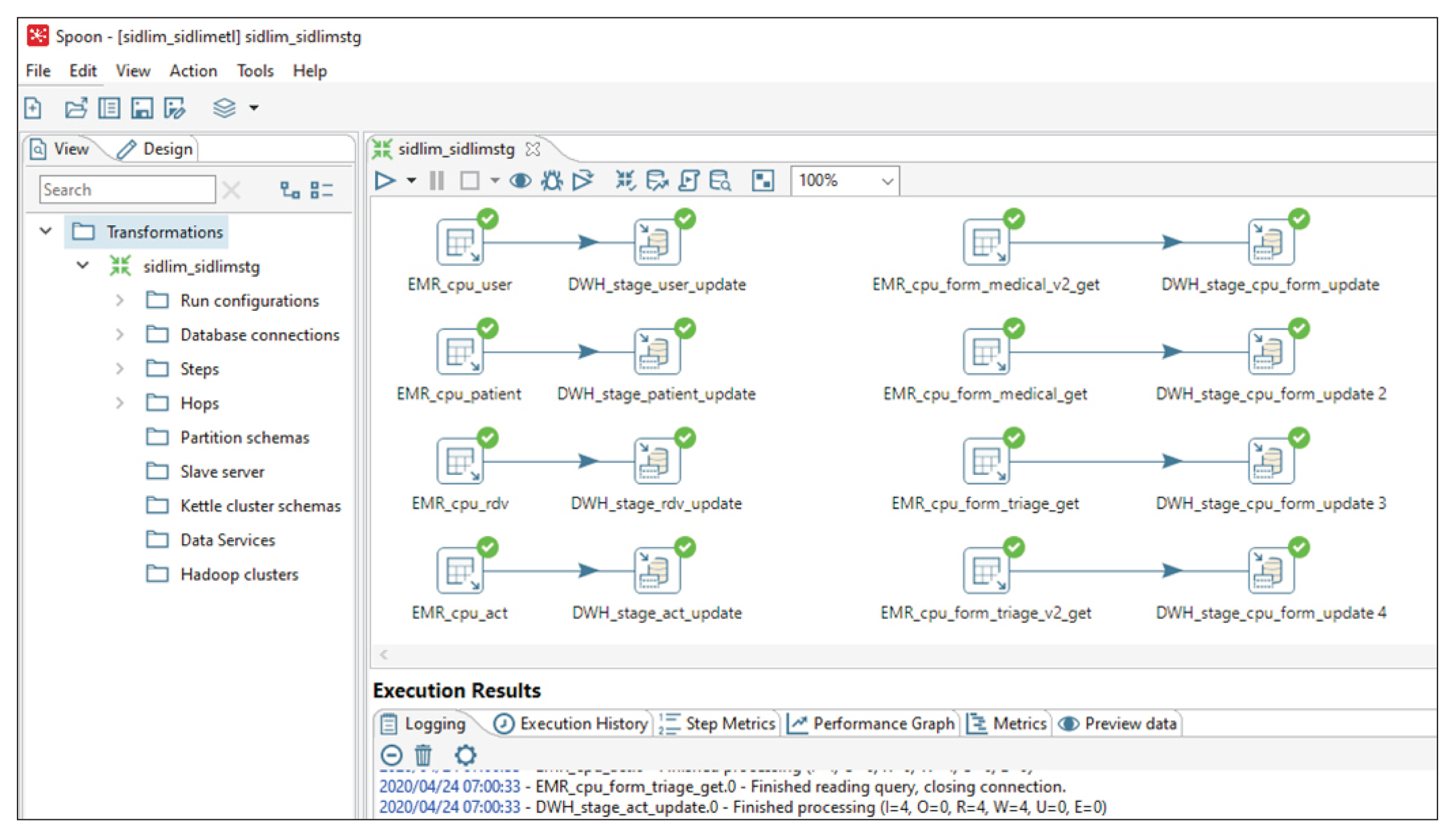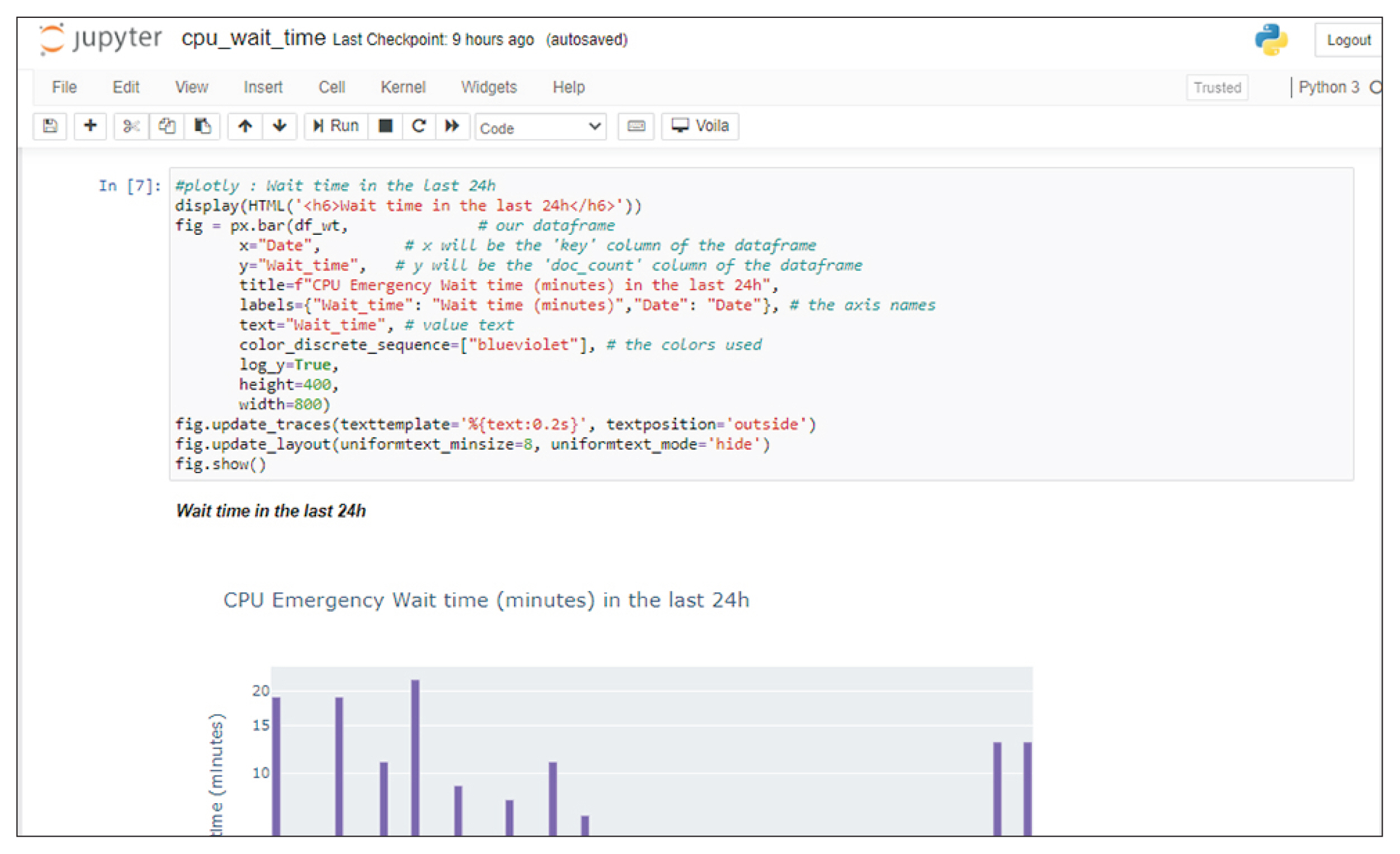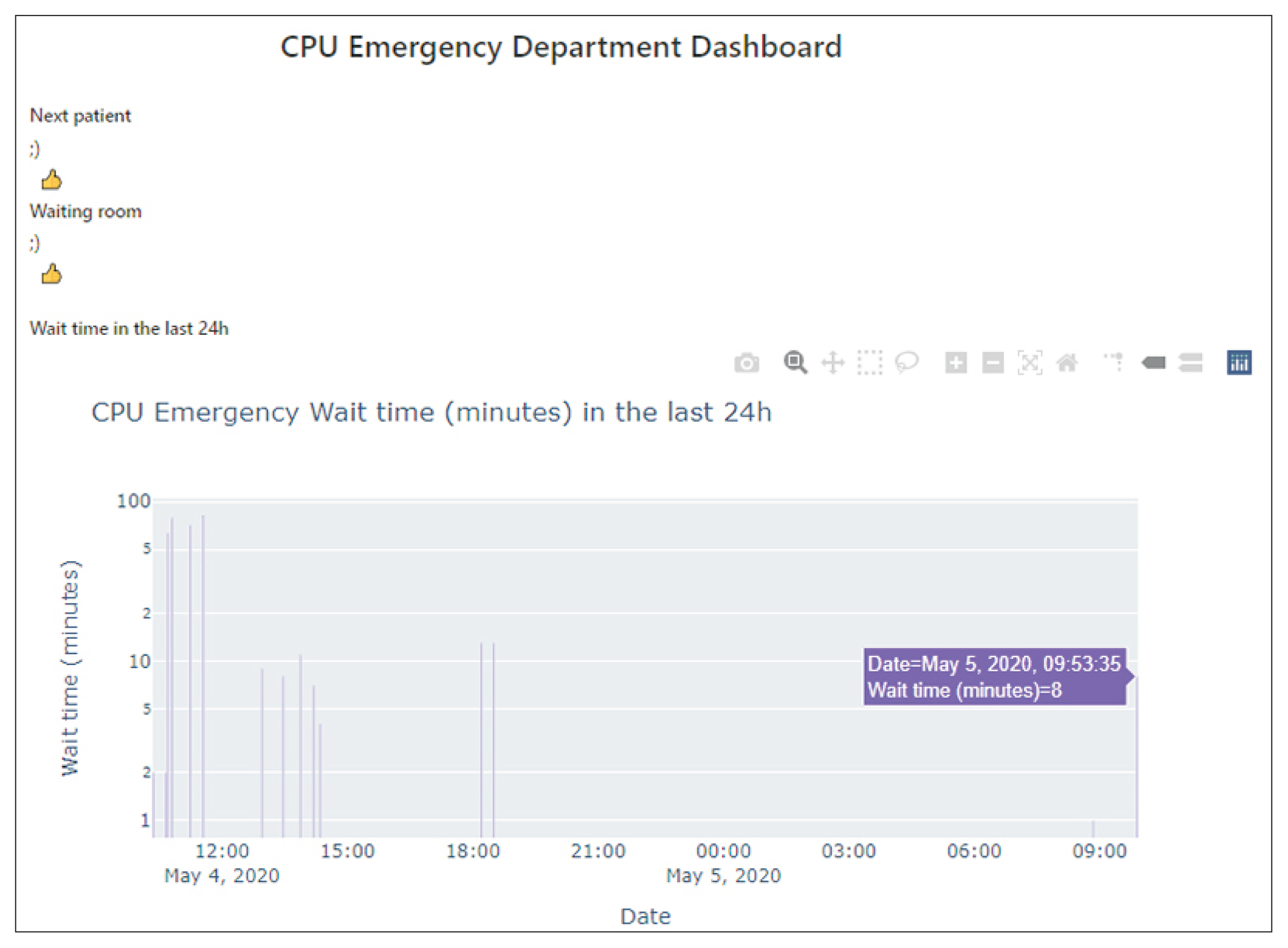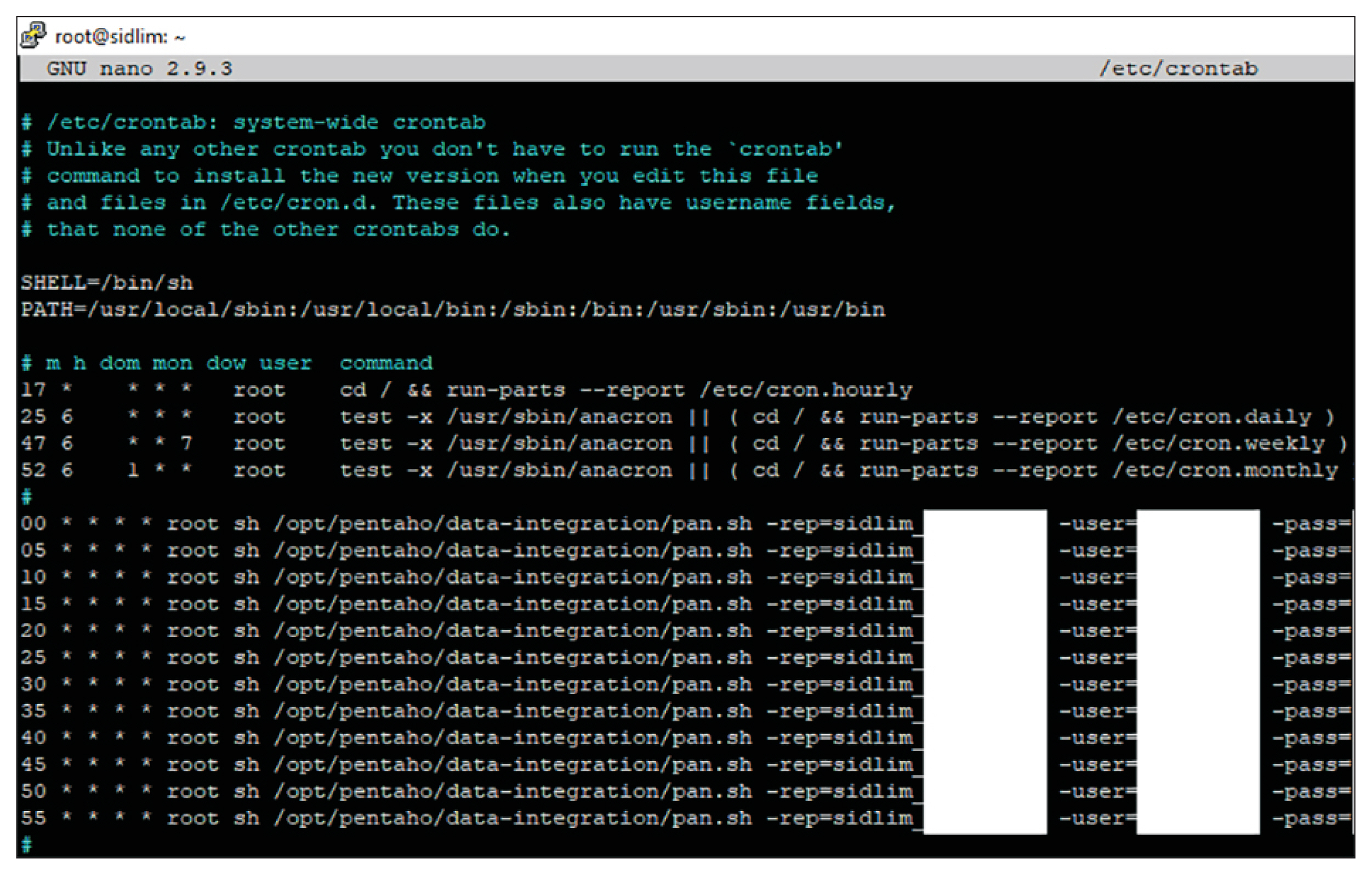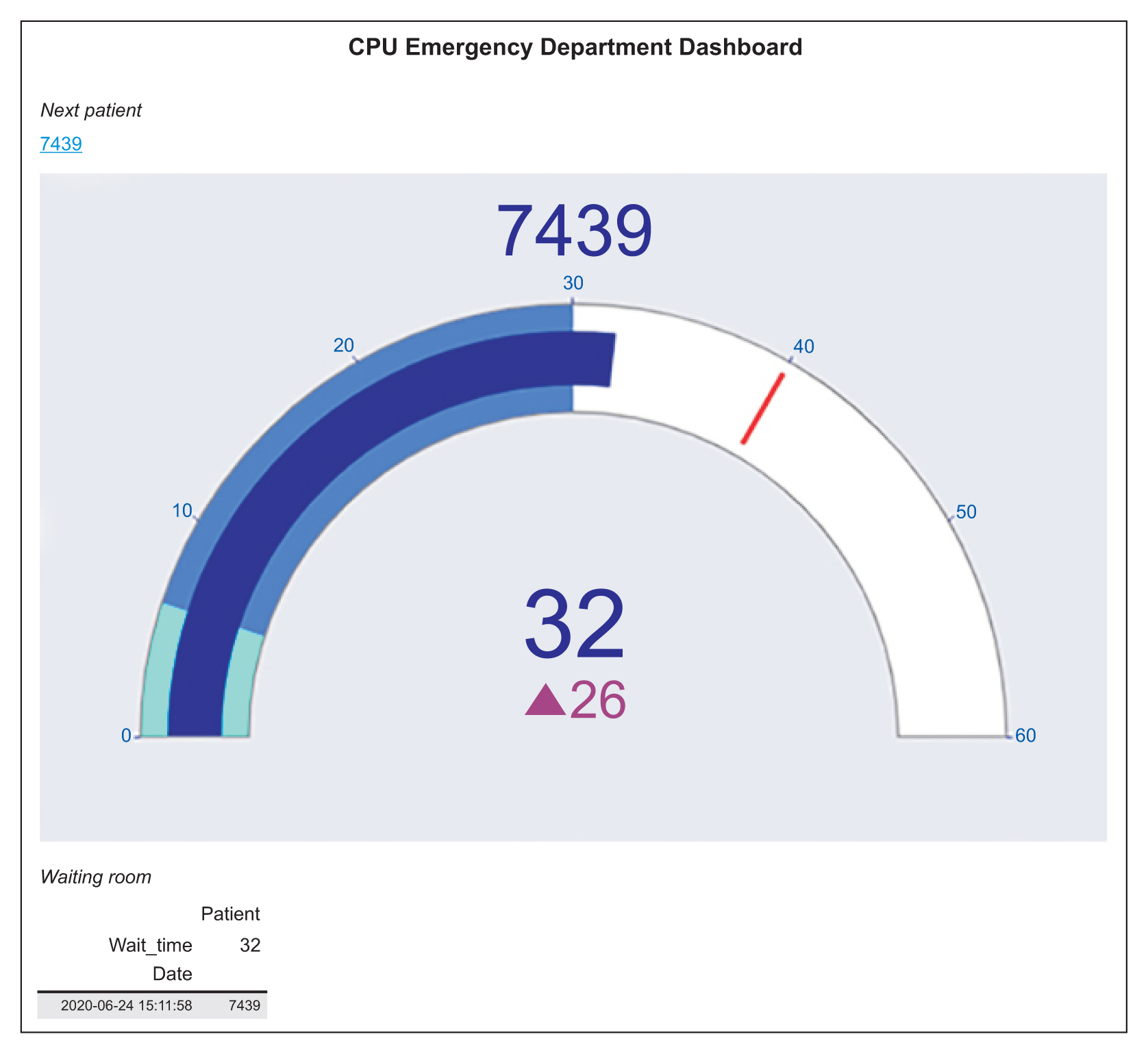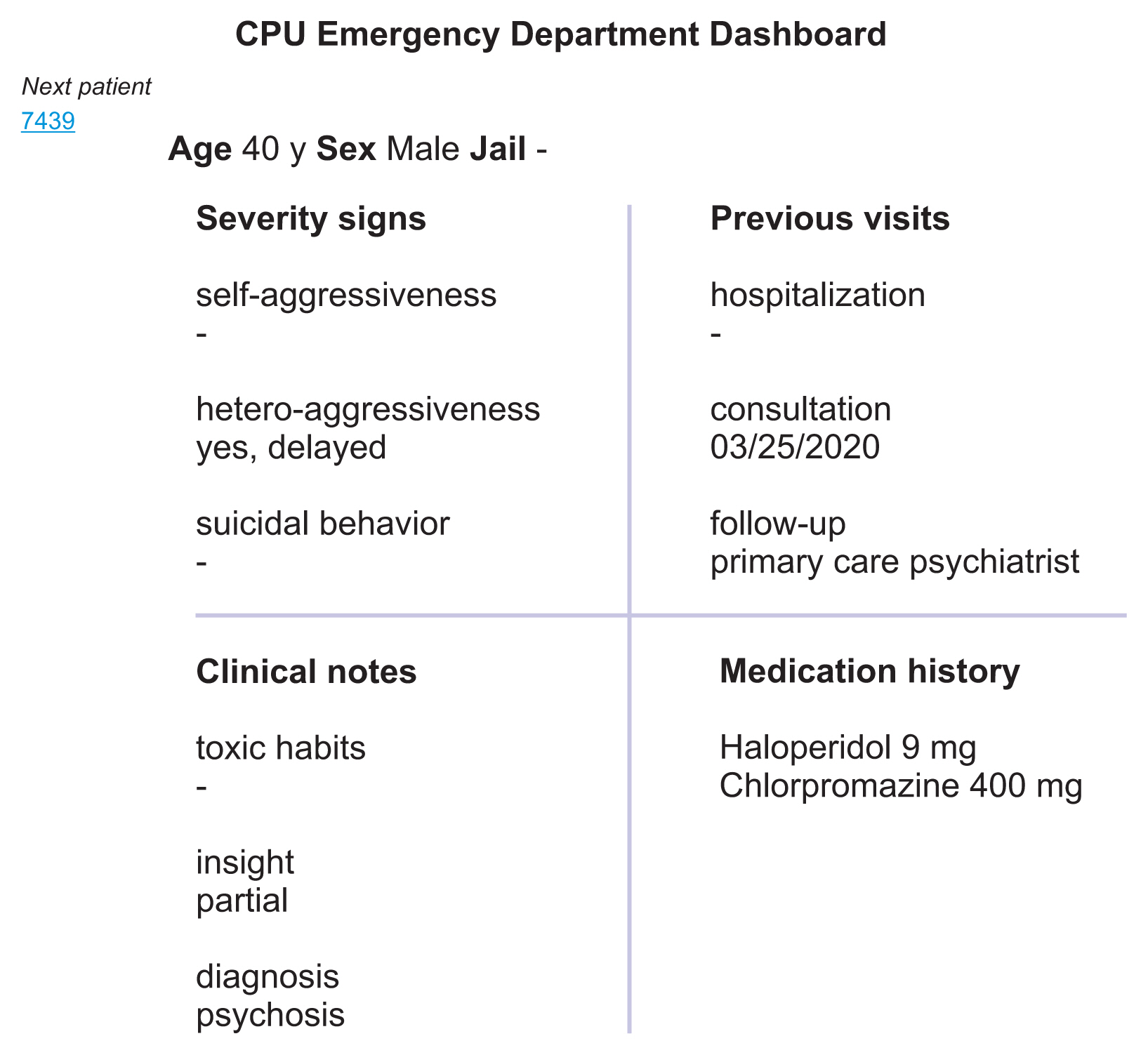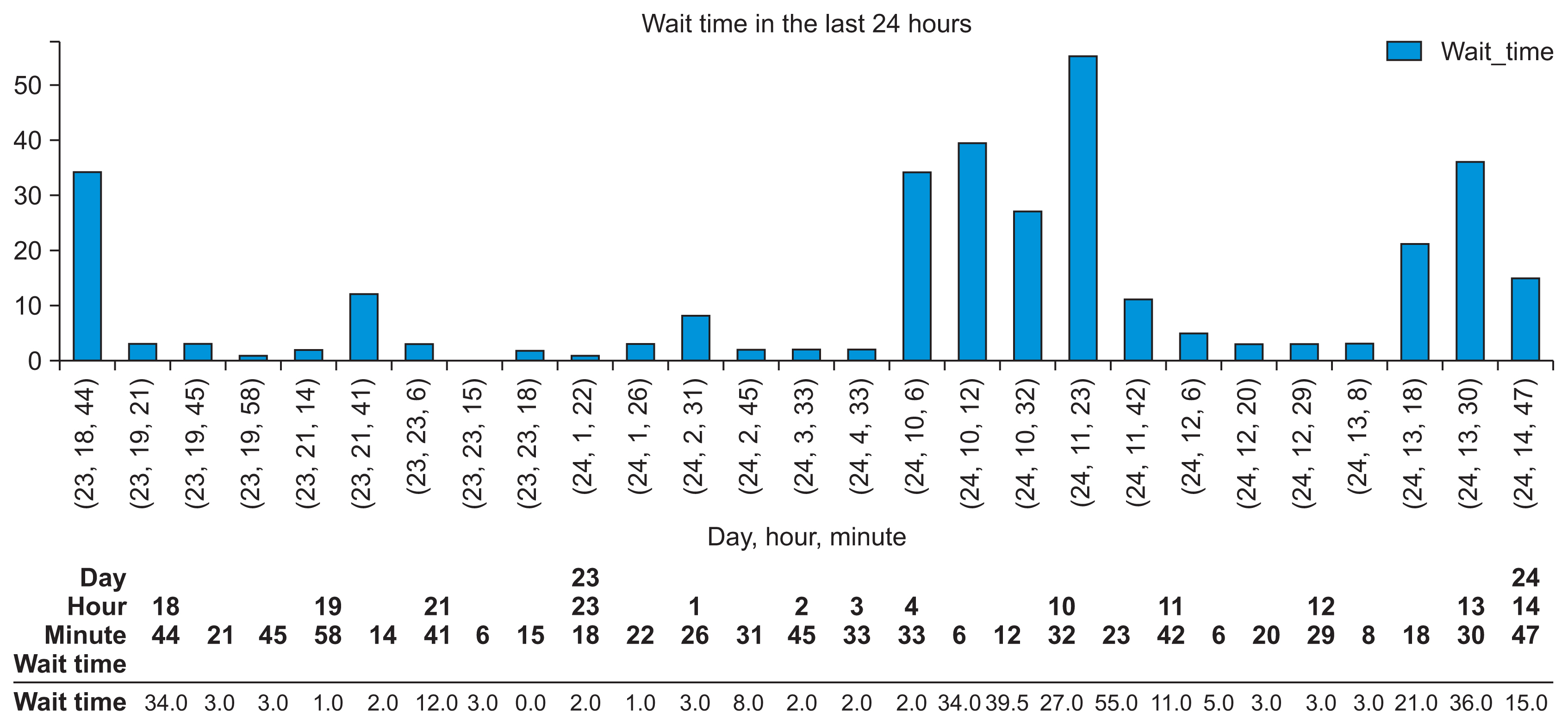Healthc Inform Res.
2020 Oct;26(4):344-350. 10.4258/hir.2020.26.4.344.
Real-Time Monitoring System to Manage Mental Healthcare Emergency Unit
- Affiliations
-
- 1Medical Informatics Laboratory, Faculty of Medicine and Pharmacy, University Hassan II, Casablanca, Morocco
- 2Clinical Neurosciences and Mental Health Research Laboratory, University Hassan II, Casablanca, Morocco
- 3University Psychiatric Centre, University Hospital Ibn Rochd, Casablanca, Morocco
- KMID: 2508627
- DOI: http://doi.org/10.4258/hir.2020.26.4.344
Abstract
Objectives
Real-time relevant information helps guide the healthcare decision-making process in daily clinical practice as well as the management and optimization of healthcare processes. However, proprietary business intelligence suite solutions supporting the production of decision-making information requires investment that is out of reach of small and mediumsized healthcare facilities or those with limited resources, particularly in developing countries. This paper describes our experience in designing and implementing a real-time healthcare monitoring system solution to manage healthcare emergency units.
Methods
Through the use of free Business Intelligence tools and Python data science language we designed a real-time monitoring system, which was implemented to explore the Electronic Medical Records system of a university mental health emergency unit and render an electronic dashboard to support health professional daily practice.
Results
Three main dashboards were created to monitor patient waiting time, to access the clinical notes summary for the next waiting patient, and to obtain insights into activity during the last 24 hours.
Conclusions
The designed system could serve as a monitoring support model using free and user-friendly data science tools, which are good alternatives to proprietary business intelligence solutions and drastically reduce cost. Still, the key to success in decision-making systems is based on investment in human resources, business intelligence skills training, the organizational aspect of the decision-making process, and data production quality insurance.
Figure
Reference
-
References
1. Ramirez Lopez LJ, Puerta Aponte G, Rodriguez Garcia A. Internet of Things applied in healthcare based on open hardware with low-energy consumption. Healthc Inform Res. 2019; 25(3):230–5.
Article2. Park YT, Lee YT, Jo EC. Constructing a real-time prescription drug monitoring system. Healthc Inform Res. 2016; 22(3):178–85.
Article3. Miah SJ, Hasan N, Gammack J. Follow-up decision support tool for public healthcare: a design research perspective. Healthc Inform Res. 2019; 25(4):313–23.
Article4. Mane KK, Rubenstein KB, Nassery N, Sharp AL, Shamim EA, Sangha NS, et al. Diagnostic performance dashboards: tracking diagnostic errors using big data. BMJ Qual Saf. 2018; 27(7):567–70.
Article5. Martinez DA, Kane EM, Jalalpour M, Scheulen J, Rupani H, Toteja R, et al. An electronic dashboard to monitor patient flow at the Johns Hopkins Hospital: communication of key performance indicators using the Donabedian model. J Med Syst. 2018; 42(8):133.
Article6. Weggelaar-Jansen AM, Broekharst DS, de Bruijne M. Developing a hospital-wide quality and safety dashboard: a qualitative research study. BMJ Qual Saf. 2018; 27(12):1000–7.
Article7. Hubner-Bloder G, Ammenwerth E. Key performance indicators to benchmark hospital information systems: a delphi study. Methods Inf Med. 2009; 48(6):508–18.8. SelectHub. Business Intelligence software tools comparison [Internet]. Denver (CO): SelectHub;c2020. [cited at 2020 Jul 24]. Available from: https://www.selecthub.com/business-intelligence-tools/ .9. Housbane S, Khoubila A, Ajbal K, Serhier Z, Agoub M, Battas O, et al. Monitoring mental healthcare services using business analytics. Healthc Inform Res. 2020; 26(2):146–52.
Article10. Yoo J, Jung KY, Kim T, Lee T, Hwang SY, Yoon H, et al. A real-time autonomous dashboard for the emergency department: 5-year case study. JMIR Mhealth Uhealth. 2018; 6(11):e10666.
Article11. Plotly Python Graphing Library [Internet]. Montreal, Canada: Plotly;c2020. [cited at 2020 Jul 24]. Available from: https://plotly.com/python/ .12. QuantStack. And voilà! [Internet]. [place unknown]: Medium;2019. [cited at 2020 Jul 24]. Available from: https://blog.jupyter.org/and-voil%C3%A0-f6a-2c08a4a93 .
- Full Text Links
- Actions
-
Cited
- CITED
-
- Close
- Share
- Similar articles
-
- Design of Real-time Ambulance Location Monitoring System using Open API and GPS Based on Web 2.0
- A Study on the Web-Based Fuzzy Information System of a Patient Monitor
- Development and Experimental Application of an Emergency Patient Information Delivery System Using a PDA
- Internet of Things–Based Command Center to Improve Emergency Response in Underground Mines
- Constructing a Real-Time Prescription Drug Monitoring System

